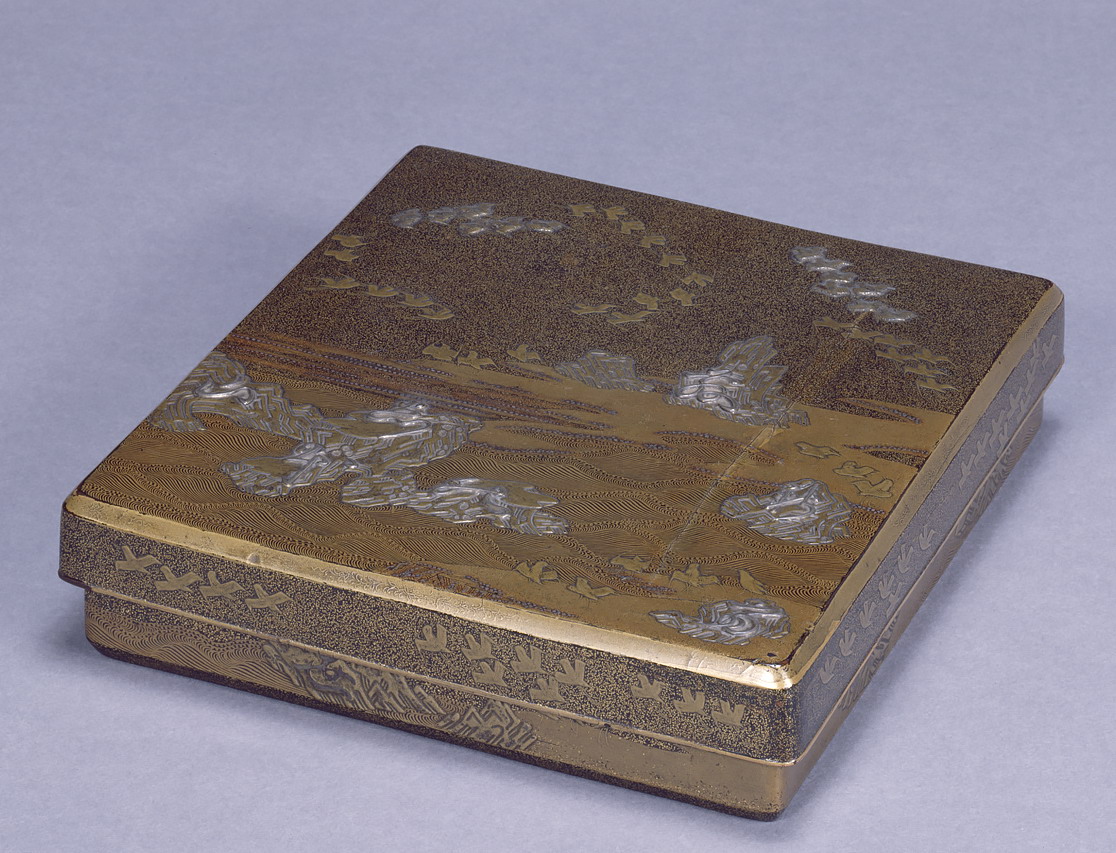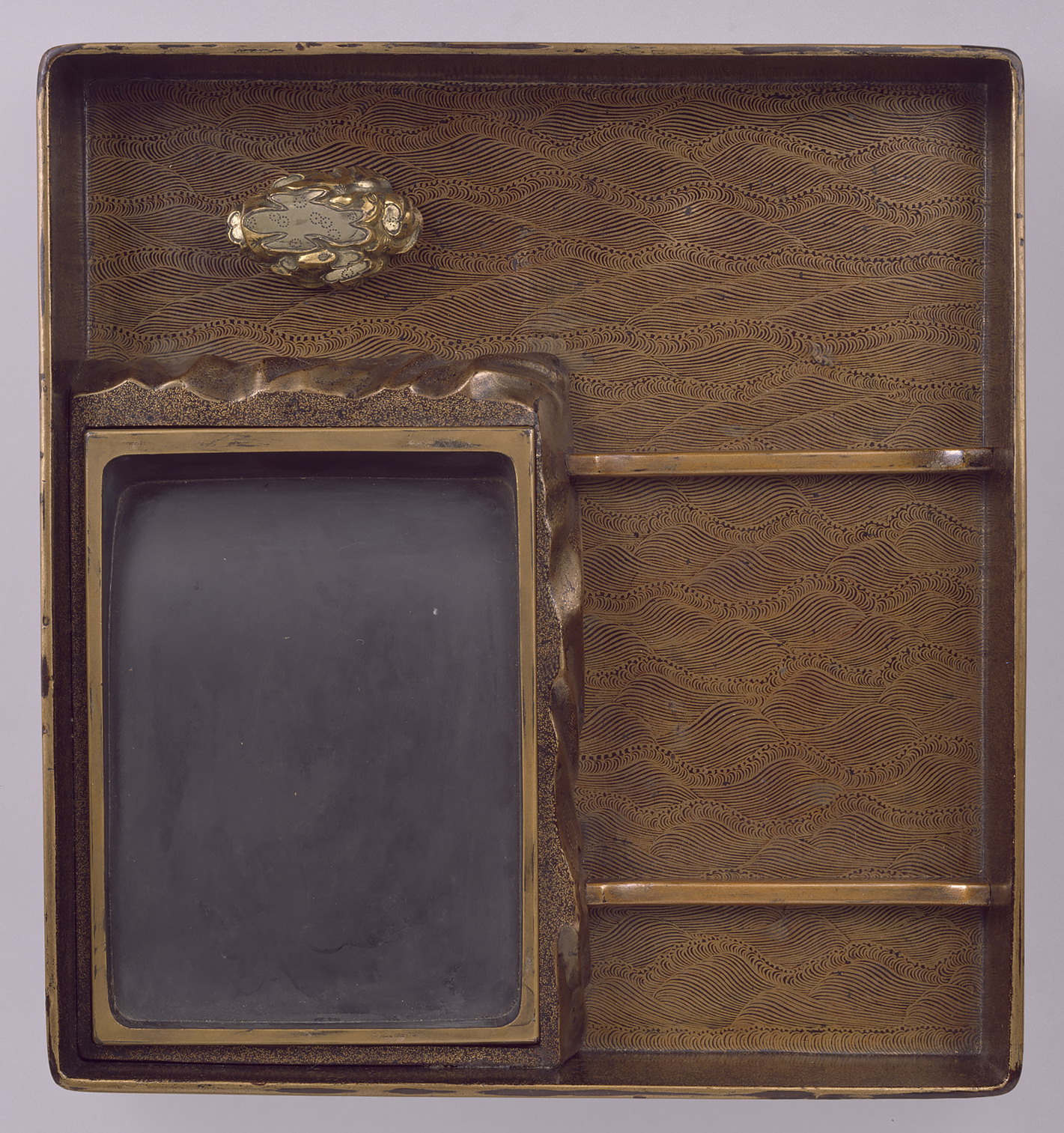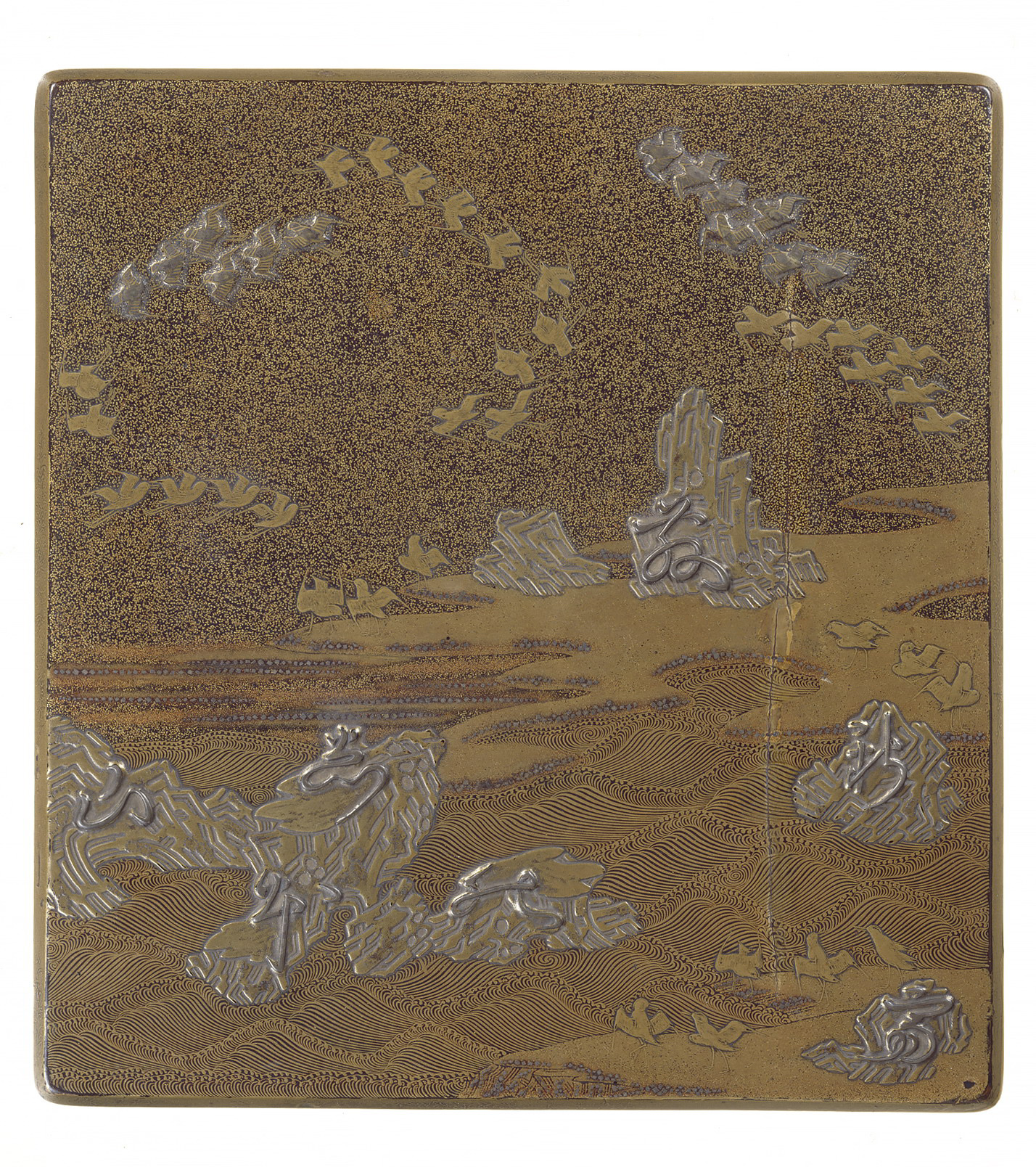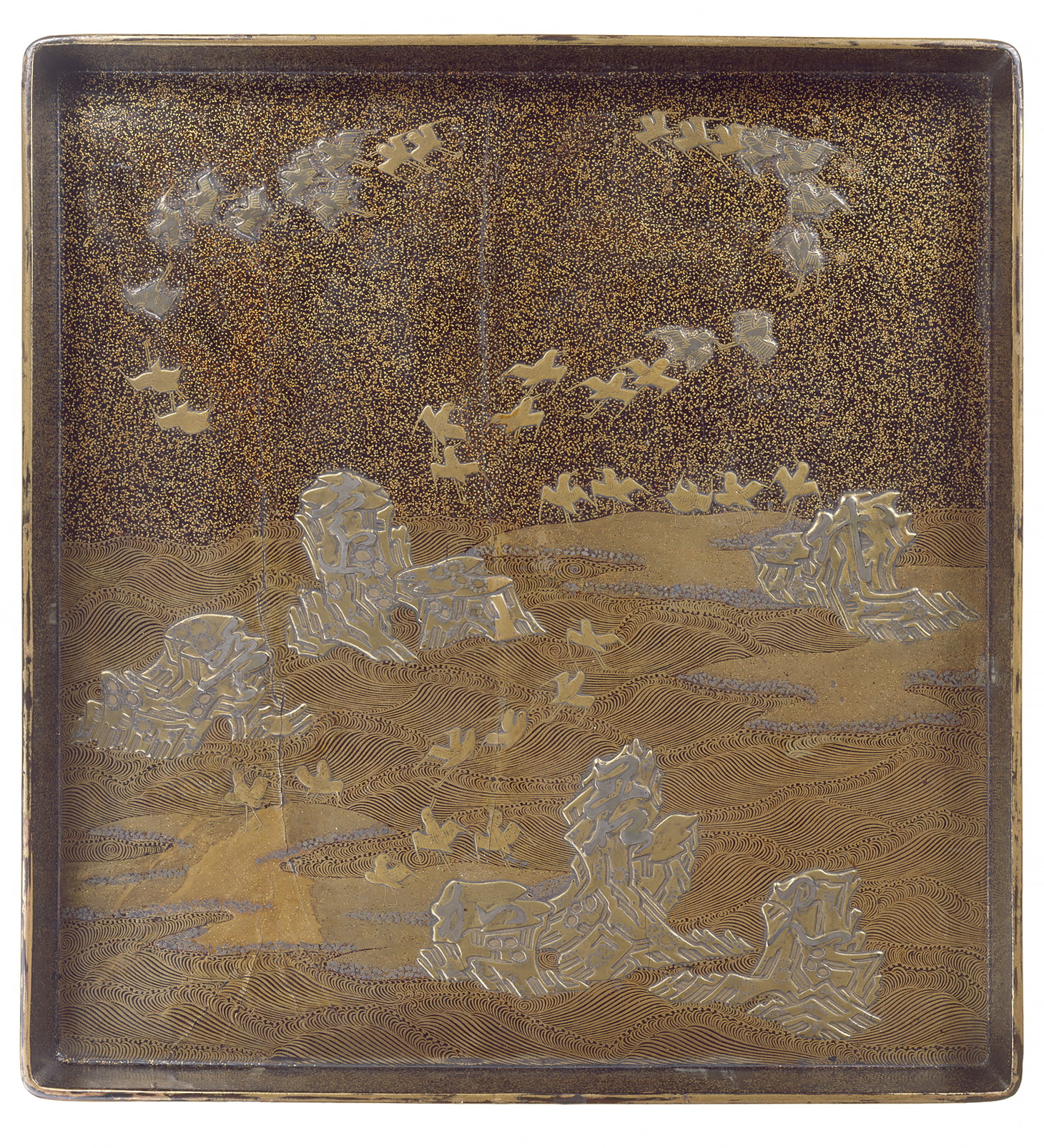- TOP
- The KNM Collection
- Masterpieces of the KNM
- Lacquerware
- Inkstone Box with Poetry-Inspired Seashore Design in Maki'e and Silver Inlay
*Click or tap image to enlarge.
Lacquerware
Inkstone Box with Poetry-Inspired Seashore Design in Maki'e and Silver Inlay
- Japan, Muromachi Period, Early- 15th century
- W. 23.8 cm, L. 25.7 cm, H. 4.8 cm
- Kyoto National Museum (HK24)
A flock of plovers fly near a seashore on this inkstone case, which formerly belonged to the family of Viscount Tsuchiya. Within the pictorial motif appear the characters written in reed script (J., ashidegaki) from a poem in the anthology Kokin wakashu (Collected Japanese Poems of Ancient and Modern Times), which describes a scene of singing plovers that live near the sea: "Plovers that inhabit the rocky coast of the Salt Cape, sing that the reign of Your Majesty may last forever."
Masterfully achieving the variegated and complex techniques of makie (sprinkled metal design), this exemplary lacquerwork of the Muromachi period (1392-1573) incorporates the nashiji (pear-skin ground, in which metal powder is scattered over a lacquered surface and coated with a translucent lacquer), ikakeji (a dense application of gold powder to a lacquered surface to produce the effect that it is made of gold), gold hiramakie (flat makie), gold togidashi makie (burnished makie), gold sabiage takamakie (raised makie using a paste made of mixed powdered burnt clay and lacquer sap), silver kanagai (nacre), gold and silver kirigane (cut foil), tsukegaki (drawing with lacquer lines that are sprinkled over with metal filings), kakiwari (design emphasized with lacquer and sprinkled metals, and plain borders), and inlaid silver chokin (carved patterns). The makie of the wave design on the lid, the inkstone, and brush rack, however, appear to have been later Edo-period (1615-1868) additions.










